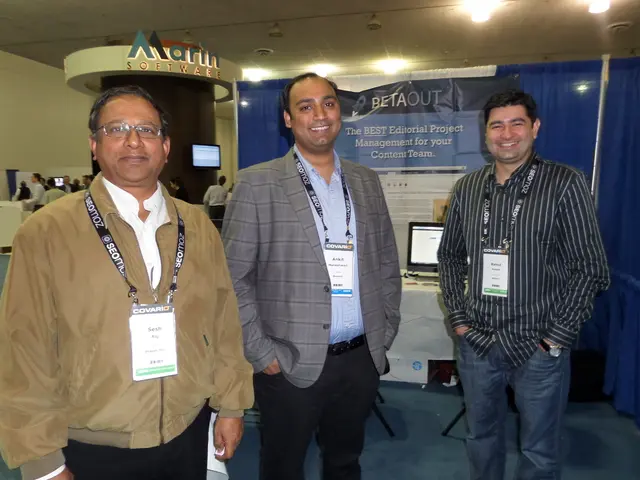Strategies for Creating a Secure Cloud Infrastructure for Businesses, According to Gartner
In today's digital landscape, effective cloud security is non-negotiable for business growth and digital security objectives. Here's a strategic guide to help businesses secure their cloud infrastructure.
## Frameworks for Cloud Security
1. **NIST Cybersecurity Framework (CSF)**: The NIST CSF offers a structured approach to managing and reducing cybersecurity risk. It includes five core functions: Identify, Protect, Detect, Respond, and Recover.
2. **AWS Well-Architected Framework**: This framework focuses on five pillars: Security, Operational Excellence, Reliability, Performance Efficiency, and Cost Optimization. It ensures cloud systems are secure, reliable, and efficient.
3. **Zero Trust Architecture (ZTA)**: ZTA, based on the principle of trusting no entity by default, requires strict identity verification and least-privilege access to resources.
## Strategic Steps for Cloud Security
### 1. **Network Security** - Use Virtual Private Clouds (VPCs) to isolate resources in a virtual network. - Implement Subnets for external-facing services and internal components. - Configure Security Groups to limit traffic to and from resources.
### 2. **Identity and Access Management (IAM)** - Use IAM Roles to assign specific permissions to EC2 instances or ECS tasks. - Implement Multi-Factor Authentication (MFA) for enhanced login security. - Use tools like AWS Secrets Manager to securely store and manage sensitive data.
### 3. **Monitoring and Compliance** - Use threat detection tools for real-time threat detection. - Monitor API calls and resource changes with CloudTrail and AWS Config. - Centralize security data and alerts with Security Information and Event Management (SIEM) Systems.
### 4. **Application Security** - Use Web Application Firewalls (WAF) to protect against common web exploits. - Enable Encryption for data at rest and TLS termination.
### 5. **Infrastructure as Code (IaC)** - Automate infrastructure deployment with tools like Terraform or AWS CloudFormation.
### 6. **Continuous Security Audits** - Regularly review access and permissions to ensure minimal and necessary access. - Conduct regular security tests to identify vulnerabilities.
By implementing these frameworks and steps, businesses can effectively secure their cloud infrastructure, ensuring both security and growth in their digital objectives.
A centralized cloud center of excellence ensures that security policies are uniformly applied, and best practices are shared. Developing cloud security skill sets within the organization is crucial, including training and certification programs.
80% of businesses view the public cloud as vital to their digital objectives. Cloud access security brokers (CASBs) are instrumental in enforcing security policies and safeguarding cloud services.
Security leaders must regularly assess their cloud environments to identify potential risks and address vulnerabilities. Frameworks like SABSA and NIST Cybersecurity Framework can provide a structured approach to integrating security into cloud strategy.
Misconfigurations can occur due to inexperience, oversight, or a lack of understanding of the cloud's unique security requirements. Using tools that provide compliance mappings to risk frameworks and security standards is essential for effective risk management.
Establishing a cloud governance framework is crucial for maintaining consistent security standards. Gartner analysts will present the latest research and advice for security and risk management leaders at the Gartner Security & Risk Management Summit. The cybersecurity mesh architecture, an emerging security pattern, allows for scalable and flexible deployment of security controls. Richard Bartley, a Research Vice President in the Gartner for Technical Professionals (GTP) Secure Technology and Infrastructure group, emphasizes the importance of these strategies.
1.Implementing the NIST Cybersecurity Framework (CSF) helps manage and reduce cybersecurity risk, with its five core functions of Identify, Protect, Detect, Respond, and Recover being crucial in securing cloud infrastructure.2. Adopting the AWS Well-Architected Framework, with its five pillars of Security, Operational Excellence, Reliability, Performance Efficiency, and Cost Optimization, ensures cloud systems are secure, reliable, and efficient.3. Zero Trust Architecture (ZTA), focused onstrict identity verification and least-privilege access to resources, can significantly enhance cloud security efforts.4. To ensure privacy and compliance, Web Application Firewalls (WAF) can be used to protect against common web exploits, and encryption should be enabled for data at rest and TLS termination.




